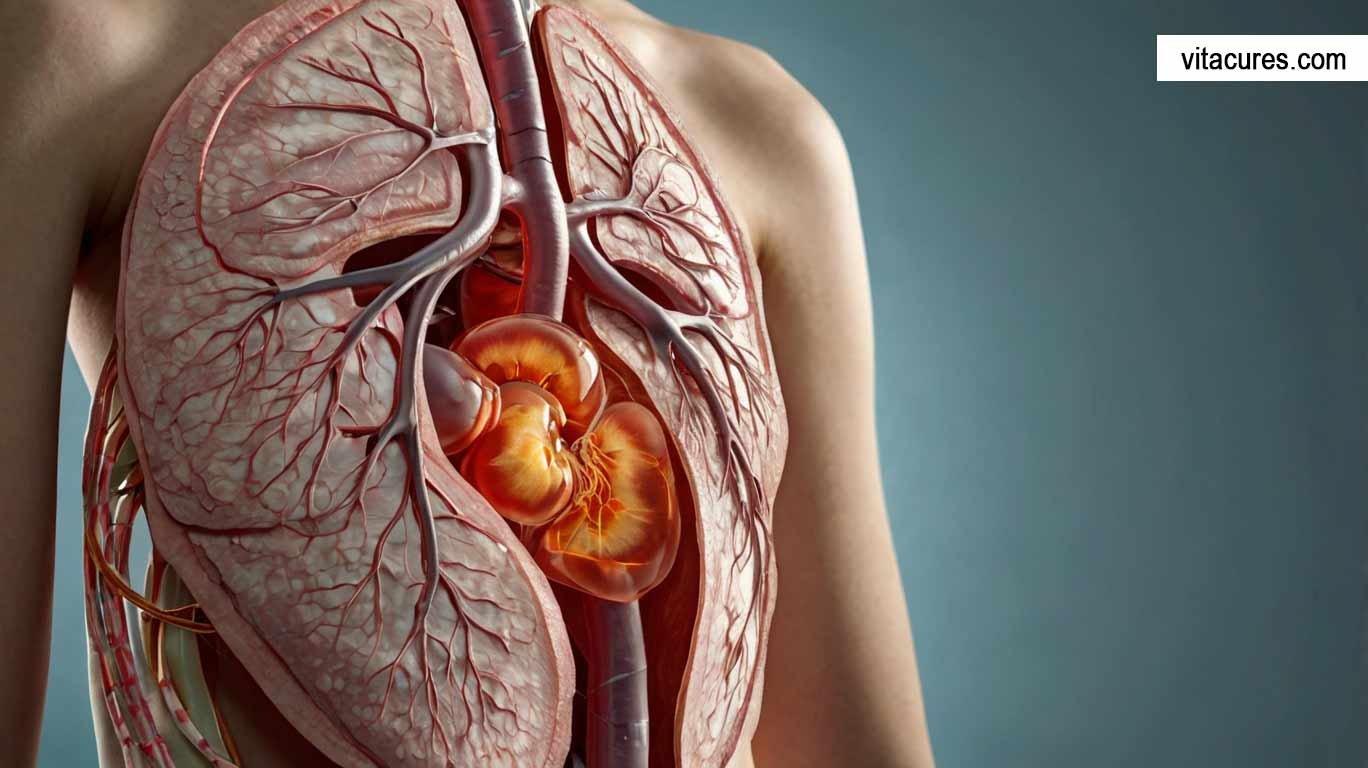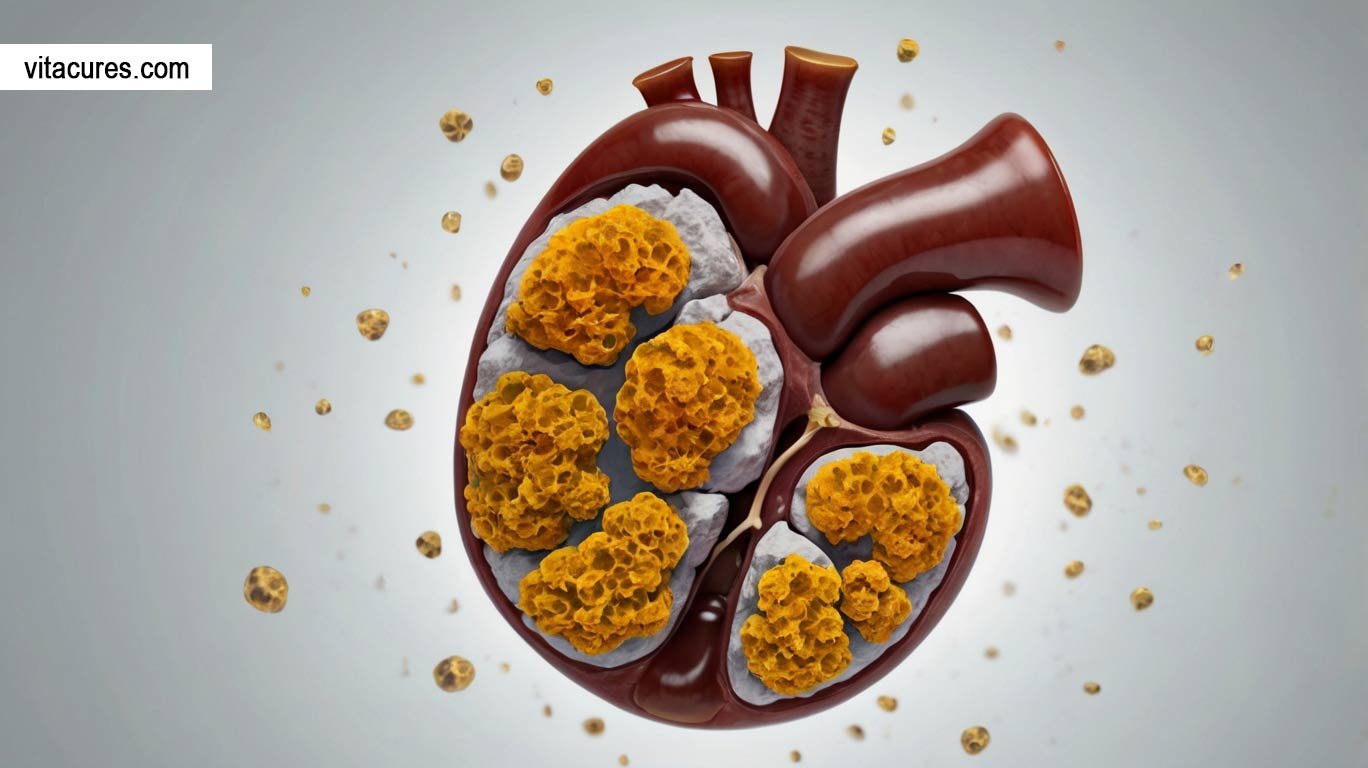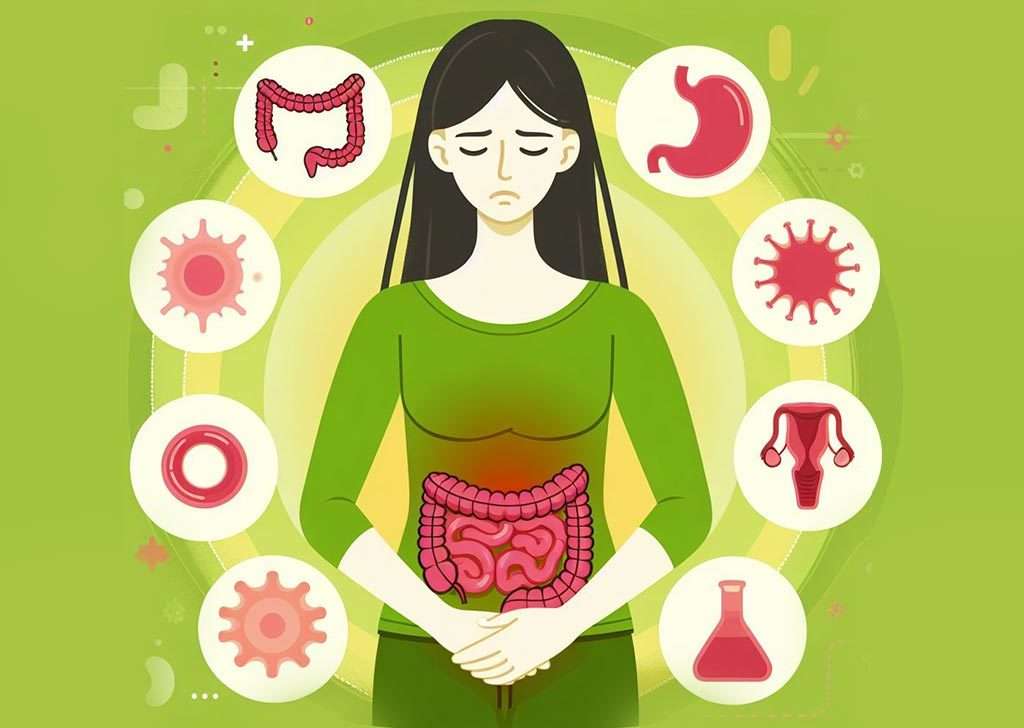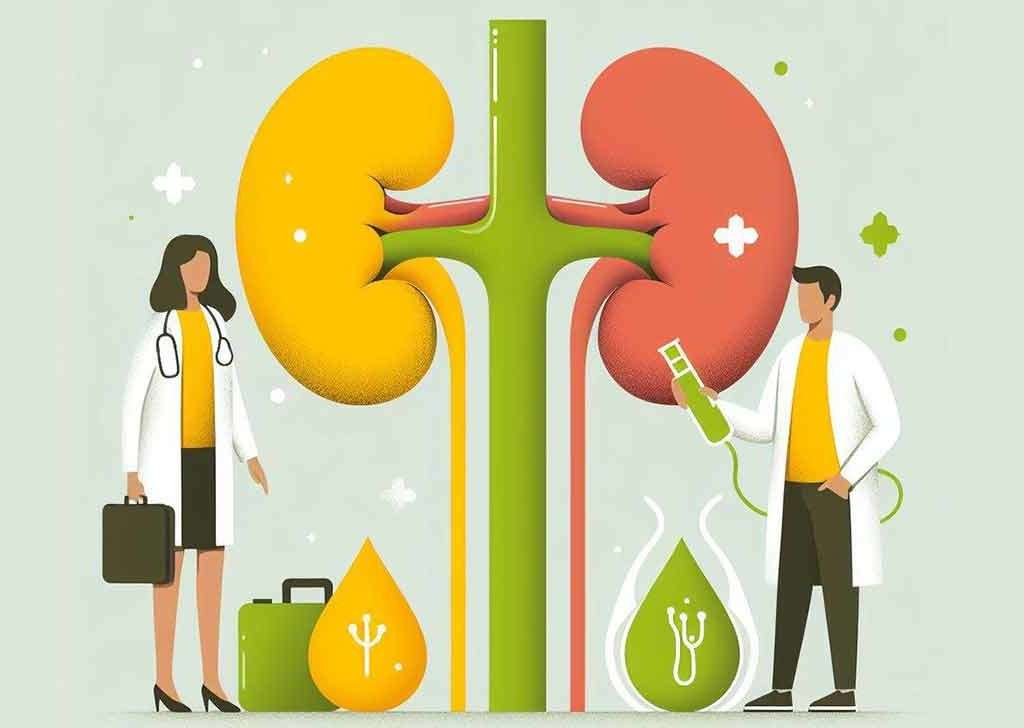Kidney stones are hard mineral deposits that form in the kidneys, causing severe pain, difficulty urinating, and sometimes infections. Learn about the causes, symptoms, treatment options, and prevention methods, including medications, surgeries, and costs in the USA.
What are kidney stones?
Kidney stones are hard deposits of minerals and salts that form in the kidneys, a condition known as nephrolithiasis or urolithiasis. These stones can vary in size and shape, ranging from small grains to larger, more complex structures. They are common in the U.S., affecting about 1 in 11 people, and can cause significant discomfort and complications if left untreated.
Kidney stones are dense deposits of minerals and salt that form in the kidneys. These stones form when the amount of calcium, oxalate, or uric acid in the urine goes up. Stones can be tiny crystals or very large structures. They can cause significant discomfort to the urinary tract and potentially lead to complications.
Dehydration makes urine more concentrated, which can lead to kidney stones. Minerals in urine that are very focused turn into stones. Genetics, medical conditions, and diet also play a role. Hyperparathyroidism, gout, and eating a lot of salt, sugar, and animal protein can all make stones more likely to form.
When kidney stones get into the ureter, they often cause pain in the back or side. The lower abdomen and groin may hurt as the stone moves through the urinary tract. Other symptoms may include bloody urine, nausea, vomiting, frequent bathroom visits, or pain. Until they become stuck or infected, kidney stones may not cause any symptoms.
Different types and sizes of kidney stones need different treatments. Staying hydrated and managing pain may help smaller stones pass. Larger or more complex stones may require extracorporeal shock wave lithotripsy (ESWL) or medications to break up. In the worst cases, surgery may be necessary to remove the stone.
Causes of Kidney Stones

Minerals and salts in urine crystallize to form kidney stones. One common reason is being dehydrated. If you don’t drink enough water, your pee gets more concentrated, which makes calcium, oxalate, and uric acid form stones. Not drinking enough water every day is a risk factor for kidney disease, so it’s important to drink enough.
What you eat can cause kidney stones. Stones can happen if you eat a lot of salt, sugar, and animal protein. Foods that are high in oxalate, like spinach, beets, and nuts, can cause stones, especially if you don’t get enough calcium. To lower this chance, cut down on salt and make sure you get enough calcium and other vitamins in your food.
Certain health issues can lead to kidney stones. Hyperparathyroidism, a condition in which the body makes too much calcium in the blood, can cause calcium-based stones. Gout or other metabolic diseases that elevate uric acid levels have the potential to cause stones. Urinary tract infections or genetic diseases like cystinuria, which makes it difficult for the kidneys to handle amino acids, can also cause stones.
Medications can also change how stones form. When used to treat high blood pressure, diuretics may raise the amount of calcium in the urine. Heartburn and stomach medicines with calcium may also raise the risk. Some drugs for migraines, seizures, and depression may change the makeup of your pee, which can make kidney stones more likely to form.
It’s possible that genetics play a role. A family history of kidney stones increases your risk. This genetic factor changes how the body receives minerals and salts, which makes pee more concentrated. Family history can make someone more vulnerable, even if they don’t change their diet or drink.
Kidney stones form when the concentration of certain substances—like calcium, oxalate, uric acid, or cystine—becomes too high in the urine. This can happen for several reasons:
- Dehydration: Insufficient fluid intake is the most common cause. Without enough water, urine becomes concentrated, allowing minerals to crystallize and form stones.
- Diet: High intake of salt, sugar, and animal protein increases the risk. A diet rich in oxalates (found in foods like spinach and nuts) can also contribute.
- Medical Conditions: Conditions like hyperparathyroidism, urinary tract infections, and gout increase the risk. Genetic predispositions, like cystinuria, make some people more prone.
- Medications: Certain medications, like diuretics or calcium-based antacids, may increase the likelihood of stone formation.
Symptoms of Kidney Stones
Kidney stones that enter the kidneys or ureter, the kidney-bladder tube, can be painful. A frequent and significant indication is renal colic, a disease that may be quite painful. Sharp pains might radiate from the back, sides, lower abdomen, or groin as the stone makes its way through the urinary canal.
One such typical symptom is hemorrhagia, which literally means blood in the urine. The stone may injure the walls of the urinary system, resulting in visible or palpable blood flowing out. Blood color changes the urine’s appearance from pink to red to brown. Even if the urine is cloudy, it may still contain blood.
Signs of a kidney stone include frequent toilet trips or an overwhelming need to urinate, especially if the stone is located close to the bladder. The onset of a desire might be rapid and subtle. While peeing, some individuals may experience burning. If you want to know the difference between these symptoms and a urinary tract infection, you should see a doctor.
Kidney stones may irritate the digestive system and induce nausea and vomiting due to the pain and inflammation they produce. The proximity of the kidneys to the digestive tract increases the risk of nausea, vomiting, and other gastrointestinal issues caused by kidney stones. When the stone passes through or obstructs the urinary tract, these sensations intensify.
Kidney stones might be the cause of your hazy or foul-smelling urine, particularly if it’s diseased. Urinary tract disorders, not kidney stones, may cause infections. You should seek immediate medical attention if you get a high temperature along with chills.
Many people experience no symptoms when the stones are small, but when they become large or move into the ureter (the tube that connects the kidney to the bladder), they can cause severe pain and other symptoms:
- Severe Pain: Known as renal colic, this pain is sharp and typically felt in the back or side, below the ribs. It may also radiate to the lower abdomen and groin.
- Blood in Urine (Hematuria): Stones can cause damage to the urinary tract, resulting in visible or microscopic blood in the urine.
- Nausea and Vomiting: The pain from kidney stones can cause gastrointestinal upset.
- Frequent Urination: Stones lodged in the lower urinary tract can trigger an urge to urinate more frequently.
- Cloudy or Foul-Smelling Urine: This may indicate an infection along with the stones.
Pain from Kidney Stones
Most people agree that kidney stones, also known as renal colic in medicine, represent one of the most severe forms of pain. A stone entering the ureter typically triggers the pain quickly, causing a strong, aching sensation. When a stone passes through the urinary tract, the pain may spread from the back or side, just below the ribs, to the lower belly, groin, or inside the legs.
A lot of the time, the pain comes in spurts and gets worse as the body tries to get past the stone. People who are going through this may find it challenging to stop these waves of pain, which can last for minutes or hours. The ureter, which bends and swells to move the stone closer to the bladder, is what causes the pain. Because of the pressure that builds up inside the blockage, kidney stones are very painful.
People often say that the pain is such that it gets in the way of their daily lives and that they need to see a doctor to feel better. Moving around, changing positions, or even breathing deeply could make the pain worse. Some individuals have compared the sudden, unbearable pain to repeated cuts or childbirth. Because of this, kidney stone pain is one of the most common reasons people go to the emergency room for bladder problems.
As the stone moves closer to your bladder, the pain may move to a different spot. If the pain is primarily felt in that area and the hip, it may intensify. The sensation is akin to urgently needing to use the restroom, which can be extremely distressing and cause intense pain. Fortunately, the pain usually subsides quickly after passing or removing the stone.
Here are some essential details about kidney stone pain:
- Severe pain is often described as one of the most intense forms of pain, comparable to childbirth or severe injury.
- Location: Pain typically starts in the lower back or side below the ribs and can radiate to the lower abdomen or groin as the stone moves.
- Fluctuating Intensity: The pain often comes in waves, increasing and decreasing in severity as the stone shifts.
- Duration: Pain can last from minutes to hours and may persist until the stone passes or is removed.
- Associated Symptoms: The intensity of the pain may cause nausea, vomiting, and difficulty finding a comfortable position.
The pain associated with kidney stones is notorious for being extremely severe. It often begins suddenly and fluctuates in intensity as the stone moves. People describe it as one of the most excruciating forms of pain, often compared to childbirth. It can last from minutes to hours, and the pain’s location can shift as the stone progresses through the urinary tract.
Treatment of Kidney Stones

Treatment for kidney stones depends on their size, location, kind, and intensity of symptoms. Doctors suggest drinking 2–3 liters of water daily for tiny stones that will pass spontaneously. This flushes out the stones from the urinary system. You can address the pain with over-the-counter ibuprofen or prescription drugs.
Larger stones that refuse to pass typically require medical intervention. Non-invasive therapy, extracorporeal shock wave lithotripsy, is prevalent. Sound waves shatter bigger stones into tiny parts that flow through the urine more readily. ESWL removes many stones under anesthesia; however, it may need further treatment.
You can use ureteroscopy to remove ureter stones that cause discomfort and blockage. The urethra inserts a tiny scope into the bladder and ureter to remove or break up stones. Direct stone access is possible with minimally invasive ureteroscopy. We may use laser fragmentation to remove the stone.
For large or challenging kidney stones, physicians recommend percutaneous nephrolithotomy (PCNL). This more invasive surgery involves a tiny back incision to reach the kidney. This incision allows a nephroscope to break apart and remove the stone. Usually, we reserve PCNL for less invasive therapies that have failed or are not suitable.
Since minimally invasive methods have improved, kidney stone removal seldom requires open surgery. We typically reserve open surgery for large stones or anatomical anomalies that pose challenges to other methods. Lifestyle adjustments and drugs are essential to preventing recurrence regardless of therapy.
The treatment depends on the size, type, and location of the stone, as well as the severity of symptoms. There are both conservative and more aggressive treatment options.
- Hydration: For small stones, drinking plenty of water (2-3 liters per day) can help flush the stone out naturally.
- Pain Management: Over-the-counter pain relievers like ibuprofen, acetaminophen, or prescription medications may be used to control pain during stone passage.
- Medical Expulsion Therapy: Doctors may prescribe alpha-blockers like tamsulosin to relax the muscles in the ureter, making it easier for the stone to pass.
- Extracorporeal Shock Wave Lithotripsy (ESWL): This non-invasive treatment uses sound waves to break larger stones into smaller fragments, which can then pass more easily.
- Ureteroscopy: For stones that do not pass on their own, a urologist may use a small scope to remove or break up stones. This procedure may require anesthesia.
- Percutaneous Nephrolithotomy: In rare cases, when stones are large or complex, a small incision is made in the back to directly remove the stone using a nephroscope.
Medications for Kidney Stones
We manage kidney stones with medications to reduce discomfort and ease passage. We give NSAIDs like ibuprofen and naproxen for mild to severe pain. Supervised administration of opioids is possible for severe pain. These drugs reduce urinary tract pain as stones pass.
Other kidney stone treatments include alpha-blockers like tamsulosin. These medications relax ureter muscles, helping the stone move and pass. This may considerably minimize stone movement discomfort and enhance the probability of passing the stone without intrusive therapies.
Drugs may prevent kidney stones, particularly in repeated cases, in addition to treating pain. People commonly give potassium citrate to prevent calcium-based stones by making urine less acidic. Allopurinol, which lowers uric acid levels, can treat urinary stones.
Antibiotics may be required if kidney stones coexist with a UTI. We must treat infected stones concurrently to prevent future complications. The bacteria causing the illness determines the antibiotics, and therapy continues until the infection and stones are gone.
Managing stone production requires drugs for underlying illnesses such as gout or hyperparathyroidism. These drugs lower the risk of kidney stones by treating the root causes and helping patients manage their illnesses.
- Pain Relief: Non-steroidal anti-inflammatory drugs (NSAIDs) like ibuprofen or naproxen are commonly used to manage pain. Opioids may be prescribed for severe pain.
- Alpha-Blockers: Tamsulosin helps to relax the ureter muscles, easing the passage of the stone.
- Antibiotics: If the stone is associated with a urinary tract infection, antibiotics are necessary to clear the infection.
- Preventive Medications: To prevent future stones, doctors may prescribe medications depending on the type of stone. For example, potassium citrate helps reduce the formation of calcium stones, while allopurinol may be used for uric acid stones.
Surgery for Kidney Stones
Larger stones that refuse to go away or those causing severe discomfort, infections, or urinary flow issues typically require surgery. The patient’s health, stone size and position, and operation type determine surgical options. Ureteroscopy is the least invasive and most common. This involves inserting a thin, pliable tube into the ureter or kidney via the urethra and bladder. Lasers have the potential to fracture the stone into fragments, which urine can then remove or flush away.
Percutaneous nephrolithotomy (PCNL) may be the best approach to remove kidney stones too large for ureteroscopy or in hard-to-reach locations. This surgery requires a minor back incision to insert a catheter directly into the kidney. Then, a nephroscope locates and breaks up the stone using ultrasound or light. PCNL is more intrusive than ureteroscopy, but it works effectively for larger stones or more difficult situations and usually requires a brief hospital stay.
Open surgery is sometimes the only choice when less intrusive methods fail. Open surgery for kidney stones involves making a larger hole in the back or abdomen and hand-removing the stone, although it seldom occurs. Only when the body isn’t operating well or there are large stones that other procedures can’t manage is this approach employed. Open surgery is riskier and takes longer to recuperate, although less invasive procedures have made it less common.
Another novel approach for precision kidney stone removal is robotic-assisted laparoscopic surgery. This approach is somewhat invasive, similar to open surgery. Surgeons operate robotic instruments. Benefits include reduced pain, quicker recovery, and fewer scars. No matter the operation, follow-up care is necessary to prevent stones and treat underlying health issues.
When stones are too large to pass naturally, cause persistent pain, block urine flow, or lead to complications like infection, surgery may be required:
- Ureteroscopy: A thin tube with a camera is passed through the urethra to the bladder and ureter to remove or fragment stones.
- Percutaneous Nephrolithotomy (PCNL): This is used for large stones, where a small incision is made in the back, and the stone is removed through a tube.
- Open Surgery: This is rare but may be necessary for very large or complex stones that cannot be removed with other methods.
Cost of Treatment in the USA
The cost of kidney stone treatment in the United States varies widely depending on the severity of the condition, the type of treatment required, geographic location, and whether the patient has health insurance. For minor cases where small stones pass on their own, treatment may only involve diagnostic imaging and medication, which can still result in substantial costs. An emergency room visit for severe kidney stone pain, including imaging tests like a CT scan, can range from $2,000 to $5,000. With insurance, out-of-pocket costs will depend on the deductible and copays, but for uninsured patients, these expenses can be significant.
The cost for patients requiring Extracorporeal Shock Wave Lithotripsy (ESWL), a non-invasive procedure to break down stones, can range from $5,000 to $10,000. Typically, patients undergo ESWL on an outpatient basis, with factors such as hospital fees, anesthesia, and follow-up appointments contributing to the total expense. Insurance may cover a portion of this cost, but patients should check their plan details for coverage specifics, including any copays or deductibles that might apply.
If the kidney stone requires a more invasive procedure like ureteroscopy, which involves using a scope to locate and remove or fragment the stone, the cost can be higher, generally ranging between $10,000 and $15,000. This price includes the procedure itself, anesthesia, hospital or surgical center fees, and any necessary follow-up care. Again, patients with insurance may see a reduction in these costs, but uninsured individuals could face the full amount.
For large or complex stones that necessitate percutaneous nephrolithotomy (PCNL), the treatment costs are higher, typically between $20,000 and $30,000. PCNL is a more involved surgical procedure that often requires a hospital stay, adding to the overall expense. The cost factors include the surgeon’s fees, anesthesia, hospital charges, and postoperative care. Patients with comprehensive health insurance can expect lower out-of-pocket expenses, while those without coverage might consider hospital financial assistance programs or payment plans to help manage the costs.
Open surgery for kidney stones, although rare, can be the most expensive option, with costs potentially exceeding $30,000 due to its invasive nature and extended recovery time. This includes the surgeon’s fee, a longer hospital stay, and postoperative care. While most patients in the U.S. can avoid open surgery due to advances in less invasive techniques, those who do require it will likely face significant costs unless covered by insurance.
Overall, health insurance plays a major role in determining the final out-of-pocket cost for kidney stone treatment. We encourage patients to confirm their coverage with their insurance provider to comprehend the potential expenses. Uninsured patients should explore financial aid or alternative payment arrangements at hospitals or clinics to reduce the financial burden of treatment.
The cost of kidney stone treatment varies based on the complexity of the case, the type of procedure, and geographic location. Here’s a rough estimate:
- Initial Diagnosis: An emergency room visit with diagnostic imaging (like CT scans or X-rays) can cost between $2,000 and $5,000 without insurance.
- Medical Expulsion Therapy: Medications to assist stone passage may cost $200 to $500, depending on the drug and whether you have insurance.
- ESWL (Shock Wave Lithotripsy): This procedure typically costs between $5,000 and $10,000. Prices may increase based on the facility and region.
- Ureteroscopy: The cost of ureteroscopy can range from $10,000 to $15,000, particularly if it involves anesthesia and overnight observation.
- Percutaneous Nephrolithotomy: This more invasive surgery may cost between $20,000 and $30,000 due to hospital stay, anesthesia, and specialist fees.
For patients with health insurance, out-of-pocket costs will vary based on the deductible, copay, and the specifics of the insurance plan. It’s important to check coverage details with the insurance provider to get an accurate estimate of costs. For those without insurance, treatment costs can be significantly higher, and some clinics offer payment plans or financial assistance.
Important Points to Remember:
- Prevention is Key: Staying hydrated and adjusting your diet can prevent kidney stones.
- Recognizing Symptoms: If you experience severe back pain, blood in urine, or nausea, consult a doctor immediately.
- Treatment Options: Many stones can be treated conservatively, but larger stones may require advanced treatment like lithotripsy or surgery.
- Pain Management: Kidney stone pain is intense, and managing this pain with appropriate medication is crucial for patient comfort.
- Cost Consideration: Treatment costs vary significantly, and knowing the options available in your healthcare coverage is important.
Limbs amputated kidney stone
Complications from severe or untreated nephrolithiasis have resulted in lung amputation. Stones in the kidney do not always lead to the prompt amputation of a limb. Untreated kidney stones can lead to serious infections or sepsis. The following is a detailed discussion of the possible causes of this phenomenon:
How Kidney Stones Can Lead to Severe Complications
Kidney stones can block the flow of urine, creating a build-up of pressure in the urinary system, which increases the risk of urinary tract infections (UTIs). If an infection from a kidney stone is not properly treated, bacteria can spread into the bloodstream, causing sepsis, a life-threatening condition. Sepsis triggers a widespread inflammatory response throughout the body, leading to organ failure, tissue damage, and poor blood circulation.
In severe sepsis, circulation to the limbs may be compromised, resulting in a condition called septic shock. When septic shock occurs, blood pressure drops dramatically, and blood flow to the extremities—like the arms, legs, hands, and feet—may become severely restricted. Without adequate blood flow, tissue in these areas begins to die, and in extreme cases, amputation of limbs may be necessary to save the patient’s life.
Sepsis and Kidney Stones: The Critical Connection
- Urinary Tract Infections (UTIs): Kidney stones can trap bacteria in the urinary tract, causing a UTI. This infection can spread to the kidneys, leading to a condition known as pyelonephritis.
- Sepsis from Infection: If the infection worsens or enters the bloodstream, it can lead to sepsis. Sepsis is a serious, body-wide immune response to infection that can lead to systemic inflammation, reduced blood flow, and multi-organ failure.
- Septic Shock and Blood Flow Loss: In the most severe cases, sepsis progresses to septic shock, where blood pressure plummets, and the body diverts blood away from the limbs and extremities to preserve vital organs like the heart and brain. Without adequate blood flow, tissues in the arms and legs begin to die due to a lack of oxygen.
- Amputation as a Last Resort: If sepsis is not controlled in time, doctors may have to amputate limbs to prevent the infection and tissue damage from spreading further. This drastic measure is typically considered only when all other treatment options, including antibiotics and intensive care, have failed, and the risk to the patient’s life is too high.
Risk Factors That Increase the Likelihood of Sepsis
- Delayed Treatment: Ignoring symptoms of kidney stones or delaying treatment increases the risk of complications like infection and sepsis.
- Compromised Immune System: People with weakened immune systems (due to conditions like diabetes, cancer, or HIV) are more susceptible to infections that can escalate into sepsis.
- Large or Obstructive Stones: Larger stones are more likely to block the ureter and disrupt normal urine flow, leading to infections that can trigger sepsis.
- Frequent UTIs or Chronic Kidney Problems: People with recurrent kidney stones or UTIs are at a higher risk of developing severe infections.
Warning Signs of Sepsis and Kidney Stones
- Severe Pain and Fever: Intense, sharp pain in the back or side along with fever, chills, and difficulty urinating can indicate both a kidney stone and an infection. Fever is a major red flag in the context of kidney stones, as it may signal that the infection is spreading.
- Sepsis Symptoms: Early signs of sepsis include confusion, rapid heartbeat, extreme fatigue, difficulty breathing, and high or very low body temperature. If any of these symptoms occur, emergency medical care is essential to prevent life-threatening complications.
Treatment to Prevent Sepsis and Amputation
Early and aggressive treatment of kidney stones and any related infection is critical to avoid complications like sepsis. The steps include:
- Antibiotics: For bacterial infections associated with kidney stones, antibiotics are essential to stop the infection from spreading.
- Removal of the Stone: Depending on the size and type of stone, removal options include extracorporeal shock wave lithotripsy (ESWL), ureteroscopy, or percutaneous nephrolithotomy (PCNL). Prompt removal of the stone helps restore normal urine flow and prevent infection.
- Monitoring and Sepsis Management: If sepsis develops, immediate hospitalization is required. Treatment typically includes intravenous antibiotics, fluids, medications to maintain blood pressure, and in some cases, mechanical ventilation or dialysis to support organ function.
- Amputation (as a Last Resort): If blood flow to the limbs has been severely restricted due to septic shock, and tissue death has occurred, doctors may resort to amputation to save the patient’s life. This decision is made only in the most severe cases.
Conclusion
While kidney stones themselves do not directly cause limb amputation, severe complications from untreated stones—such as infections and sepsis—can lead to tissue death in the limbs, requiring amputation in extreme cases. The key to preventing these serious outcomes is prompt medical intervention when symptoms of kidney stones and infections arise, as well as aggressive treatment of sepsis. Early detection and treatment of both kidney stones and infections can greatly reduce the risk of life-threatening complications like septic shock and the need for amputation.
Frequently Asked Questions (FAQs)
1. What are kidney stones?
Kidney stones are hard deposits made of minerals and salts that form inside your kidneys. They can vary in size from a grain of sand to a larger mass, blocking the flow of urine and causing intense pain.
2. What causes kidney stones?
Kidney stones form when the concentration of certain substances, like calcium, oxalate, and uric acid, becomes too high in the urine. Factors like dehydration, a high-protein diet, excessive salt intake, certain medical conditions, and genetics can increase the risk of developing kidney stones.
3. What are the symptoms of kidney stones?
The main symptom is severe pain in the back or side, often radiating to the lower abdomen or groin. Other symptoms include blood in the urine, nausea, vomiting, frequent urination, and pain during urination.
4. How are kidney stones diagnosed?
Kidney stones are usually diagnosed through imaging tests like X-rays, ultrasounds, or CT scans. Blood and urine tests may also be performed to determine the type of stone and the underlying cause.
5. How can kidney stones be treated?
Treatment depends on the size and type of stone. Small stones often pass naturally with increased hydration and pain management. Larger stones may require medical intervention such as Extracorporeal Shock Wave Lithotripsy (ESWL), ureteroscopy, or percutaneous nephrolithotomy (PCNL) to break or remove them. In rare cases, open surgery may be needed.
6. How long does it take to pass a kidney stone?
Smaller stones may pass on their own within a few days to a couple of weeks. Larger stones, or stones that cause complications, may require medical intervention to pass or be removed.
7. How can I prevent kidney stones?
Prevention involves staying well-hydrated by drinking plenty of fluids, reducing salt and protein intake, and eating a balanced diet low in oxalates (found in spinach, nuts, and chocolate). Your doctor may also recommend specific medications if you’re prone to certain types of stones.
8. Can kidney stones come back?
Yes, once you’ve had a kidney stone, your risk of recurrence is higher. Preventive measures, such as lifestyle changes and medications, are important to lower the risk of developing new stones.
9. Are kidney stones dangerous?
While kidney stones are painful, they are generally not life-threatening. However, if left untreated, they can cause complications like kidney damage, infections, or urinary blockages, which require urgent medical care.
10. How much does kidney stone treatment cost in the USA?
The cost varies depending on the treatment type and complexity. Simple cases where stones pass naturally may cost around $2,000 to $5,000 for diagnostic tests and medication. More advanced procedures like ESWL range from $5,000 to $10,000, ureteroscopy between $10,000 and $15,000, and PCNL can cost upwards of $20,000 to $30,000. Insurance can reduce out-of-pocket expenses, but those without insurance may face the full cost.
References for Further Reading
- National Kidney Foundation
Provides comprehensive information about kidney stones, including prevention, treatment options, and dietary recommendations.
Website: www.kidney.org - Mayo Clinic
Offers an in-depth overview of kidney stones, causes, symptoms, and various treatment approaches.
Website: www.mayoclinic.org - American Urological Association (AUA)
A leading organization providing guidelines on the diagnosis and management of kidney stones.
Website: www.auanet.org - U.S. National Library of Medicine (MedlinePlus)
Provides easy-to-understand information about kidney stone causes, symptoms, and treatment options.
Website: medlineplus.gov - The Cleveland Clinic
Details various kidney stone treatments, including minimally invasive surgical options.
Website: www.clevelandclinic.org



